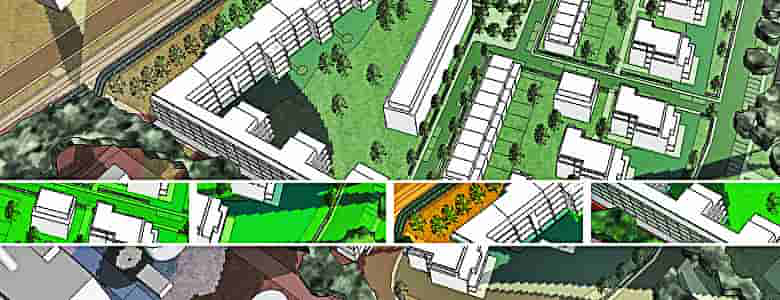Super Cool Supercomputing

With one of the planet’s highest internet penetration rates, a dedicated Smart Nation initiative, and an abundance of research and development activity, Singapore is one of the most tech-savvy countries in the world.
And with great tech-savviness comes greater demand for computing capacity. The National Supercomputing Centre (NSCC) Singapore, Southeast Asia’s only petascale [referring to computers capable of performing one million billion (1015) calculations per second] computing facility, has been tasked with meeting these needs.
It now supplies supercomputing capacity for researchers in various disciplines across the country.
TechNews’ had a chat with NSCC Deputy Director Jon Lau about the future of Singapore supercomputing, the Centre’s efforts to turn the nation into a high-performance computing powerhouse — and some crazy cool supercomputing applications.
Q:What is NSCC’s vision for supercomputing in Singapore?
NSCC’s long-term vision is to make high-performance computing (HPC) accessible to all, thereby democratising it and building a healthy ecosystem of supercomputing users. A national supercomputing facility with a high bandwidth network will connect us to the world, support national research and development initiatives, attract industrial research collaborations and enhance Singapore’s research capabilities.
Q: How will supercomputing help Singapore in its efforts to become a Smart Nation?
Many government agencies are now working with the Smart Nation team to harness the power of supercomputing for building a smarter nation. By using supercomputing to analyse various kinds of data, government agencies can use technology to improve lives and businesses.
For example, daily commutes could be improved by optimising routes and travel times; the elderly could receive personalised health monitoring, patient consultations and rehabilitation in the comfort of their homes; and citizens could perform transactions with government agencies through online and mobile services, in a hassle-free manner.
Q: How will the easier availability of supercomputing resources transform Singapore over the next decade?
HPC and the availability of supercomputing resources are essential for solving real-world computational challenges and for unlocking new scientific paradigms. Researchers and engineers can now use these resources to develop highly precise simulations of various types of phenomena, something which was difficult to achieve in the past.
It is also a cost-saving measure to be able to simulate models in silico rather than building multiple real-life prototypes. Simulations also allow more complex products to be created while minimising errors.
In addition, as the Internet of Things (IoT) increases in scope and scale, billions of internet-connected devices are now generating massive amounts of data. There is thus a need to be able to extract actionable insights from massive amounts of information accurately and quickly, and this can be done with the use of supercomputers.
By exploiting the power of supercomputing, Singapore’s level of competitiveness, as well as the lives of our people, will improve.
Q: Supercomputers around the world are getting faster and more powerful all the time. How can Singapore keep up in this arms race?
Singapore entered the petascale league in December 2016, with the unveiling of the Advanced Supercomputer for Petascale Innovation Research and Enterprise, or ASPIRE 1 for short.
This is the first in a series of supercomputers that will provide the foundation for Singapore’s push to compete in the digital economy. It is necessary for both academia and industry to interact and discuss visionary ideas, important global trends and substantial innovations in supercomputing, and work together on efforts to build exascale [one billion billion (1018) calculations per second] supercomputers.
Q: How does NSCC promote supercomputing in Singapore?
We have many initiatives that are aligned with our vision of democratising HPC and building a robust supercomputing ecosystem.
NSCC is the organiser of Supercomputing Frontiers 2017, the annual HPC international conference which was inaugurated in Singapore in 2015. The third edition was just held in March this year, and featured an exciting lineup of speakers, including luminaries such as Professor Gordon Bell and Professor Thom Dunning.
We also conduct regular monthly workshops which are tailored to several categories of people, from new HPC users to veteran scientists and researchers. We are gradually expanding our outreach efforts to include a nation-wide audience.
Additionally, NSCC creates platforms to encourage HPC adoption; our recent hackathon event, which targeted the local start-up community, is an example of this. Future plans include working with various interest groups — such as industry partners — to promote HPC to them.
Q: Finally, just for fun: what is the coolest or strangest use for a supercomputer that you’ve come across?
There are a multitude of things supercomputers can do.
From developing medicine on the fly to running simulations to optimise the process of producing potato chips — everyone’s all-time favourite snack — the possibilities are limitless.
Supercomputers can also be used to study the fluid dynamics of ‘soft matter’ such as ice cream, and figure out how to make your favourite flavour even tastier!
https://www.tech.gov.sg/media/technews/super-cool-supercomputing
